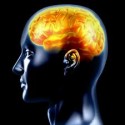Thriving with Anxiety: Where does it come from, and what can I do about it?

You are sitting in class. The clock ticks. Then it hits you: Your heart runs wild and beads of sweat run down your forehead. Anxiety comes hard and fast, but with reportedly one in five teens suffering from it, you are far from alone. Yet so many of us still see it as a crippling weakness, as something they have to hide.
We live in a world of competition. Students compete for the honour roll. Graduates compete for internships and jobs. Even friendship and dating is a competition to be selected as a friend or romantic partner. Anxiety can hurt your grades, your work opportunities, and social interactions. So how did humans end up with such a burdensome trait?
There is a specific part of the brain that handles anxiety called the amygdala. It may be hard to pronounce, but all you need to know is that it is a very small part of the brain that handles strong emotions like fear, anxiety, and aggression. The amygdala focuses on survival in the face of danger, and was essential to our evolution as a species. The problem is that it overrides other emotions and bodily functions. This makes sense when a predator is chasing you, but not when sitting in a classroom.
We evolved to associate certain sounds, like the roar of a predator, with danger. We would know when to be scared and to run away. When that same mechanism associates certain sounds and sights with anxiety, it creates phobias that we struggle with. A traumatic event like a failed test can trigger this, and cause you to fear tests far more than is healthy. Anxiety was a useful tool for survival that is trying to adapt to a modern society very different from the world in which we evolved.
In that problem lies the solution: The very nature of evolution is the idea of change. You are not doomed to have anxiety forever. Therapy can make a huge difference. This is nothing to be ashamed about, and is no different than getting treated for a papercut. The brain is a physical organ, and needs to be cared for and receive treatment just like any other part of the body.
Find your triggers. Whenever anxiety strikes, grab a pen as soon as possible. Write down the time and place, what was happening, and what thoughts went through your head. By keeping a log, you will find patterns that are hard to spot in the midst of an anxiety attack. When in a calmer state, you can write responses to these moments and thoughts, challenging them using a calm and rational state of mind. This is a component of cognitive behavioural therapy, which emphasizes the importance of thoughts and how they influence moods. By looking at anxiety as something that can be treated, you can begin working on the bandage that will make it better.
Sources:
AnxietyBC. Parent and Child.
http://www.anxietybc.com/parenting/parent-child
The Doctor Says. Where does anxiety come from?
http://www.thedoctorsays.com/anxiety/where-does-anxiety-come-from/





Leave a comment!